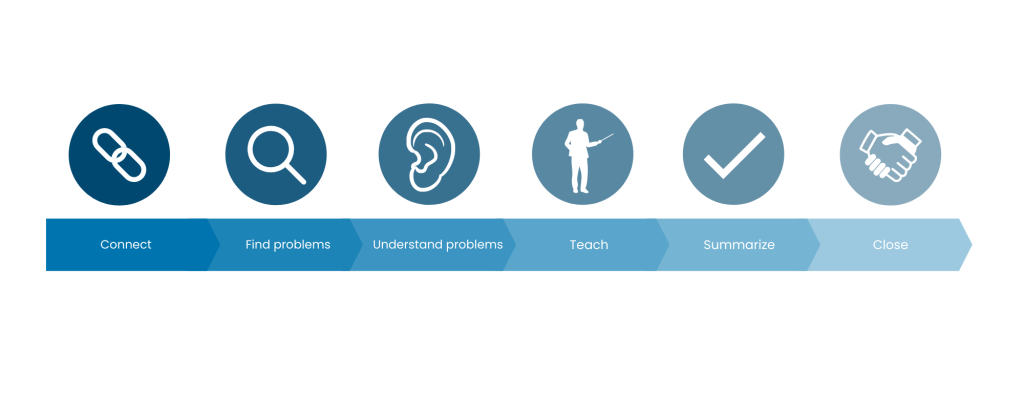Non-verbal communication contributes to empathy and trust during the conversation, but what if you cannot apply this type of communication? This is what most Sales Development Representatives (SDR) have to deal with on a daily basis. How do you convince your prospect and get them enthusiastic for the next step in your funnel?
The Match-Day conversation strategy is a good way to prepare your conversation. This process in its entirety consists of twelve steps in which we use six principles. In this article we will discuss these six principles.

Connect: The prospect you are calling does not know you. That is only logical. That is why it is important that you know your prospect well and gather as much information as possible before you start the conversation. For example, look at his/her LinkedIn profile to see what kind of experience he/she has had and where he/she has worked. This way you can make the conversation more personal and create a click with your prospect. Here are two examples that we use every day in practice:
"By the way, I also saw on your LinkedIn profile that you (experience) and then compliment him on what he has built > steps he has taken."
Or
"I noticed that you have quite a track record in the (industry). What made me excited to contact you is that you started as XYZ and now as XYZ at [COMPANY] are continuously engaged in the ..."
IMPORTANT: Make sure you don't overdo it, your prospect will notice immediately. Therefore, look carefully for authentic subjects that you can use to let them know that you have studied well. That is how you attract attention.
Find problems: After the reason for your call, ask the prospect a question to get him/her talking. The trick here is to ask a question that is not difficult to answer, but that arouses the prospect's interest:
"But I'm particularly curious given your experience what concerns you most when it comes to ..., WHILE I imagine you also have ambitions?"
By asking this question, you let them know that you are calling again especially for them because of their experience, and at the same time you know what situation is going on in the company.
Then it is important to find problems with your prospect and you can ask this question:
"If you look with an oblique eye to the future, what are the most important steps you would still like to take when it comes to (topic)?"
Understand problems: During the conversation, it is important to write everything down and listen carefully to your prospect. Write about his/her pain points and needs. In addition, you can ask questions during his/her story to get an even better picture and to give the potential customer the feeling that you are listening attentively, which increases trust. So show your interest. Questions we ask:
"What makes it so important that you want to achieve precisely XYZ?"
"Sounds logical, what is your biggest challenge in this?"
Teach: The most important thing during your pitch is to make it clear that you are not calling in order to take concrete steps right away. Don't tell them too much about your product or service, but make it clear that you are calling because you can help them with your product/service. Answer the question 'Why? What can you do for them with the problems they are facing?
Summarize: If there is interest from your prospect, carefully consider the company and the person and summarise the conversation. You can use these questions to compose and qualify your conversation:
"So the most important steps you still want to take are..."
"That's important because..."
"To get that done, XYZ are your biggest challenges... "
"Because if things stay the way they are now then..."
Close: After you have qualified your prospect, all you have to do is wrap up the deal. Right? No. Not always. Closes can be done with and without a fight. If you receive one last objection, ask your prospect these questions to put any consequences on the table:
Negative: "What impact will it have on you XYZ if you fail to (problem)
Positive: "What would it mean if your problem/ambition were to be solved?"
Then it is time to close the call. Always ask a negative question:
"I'm not sure if it's something that fits, but is it perhaps a bad idea to ...?"





